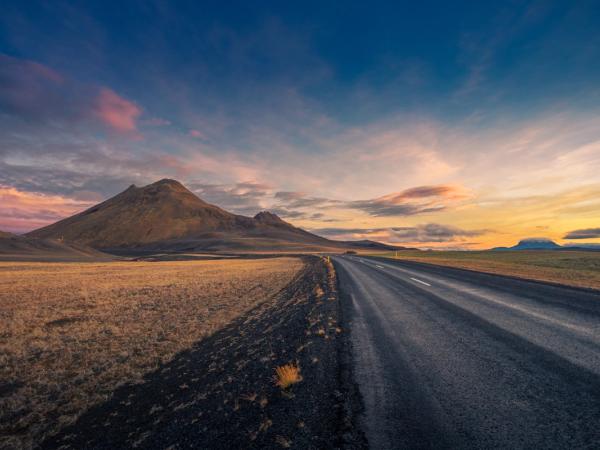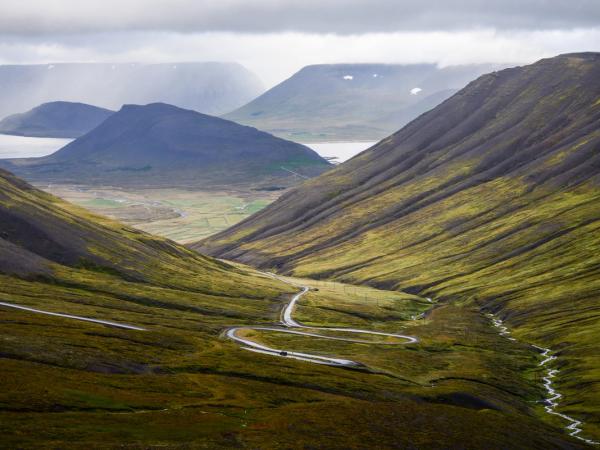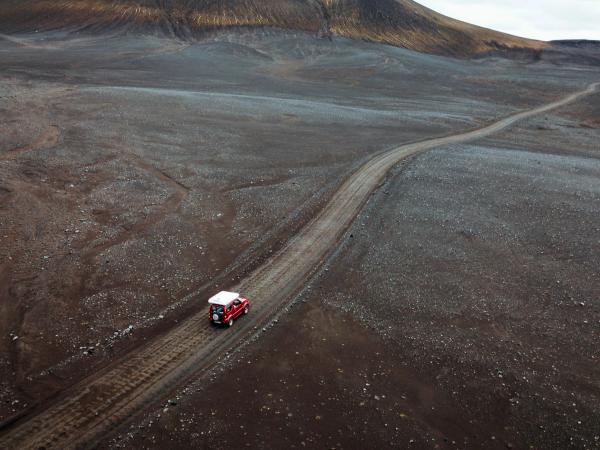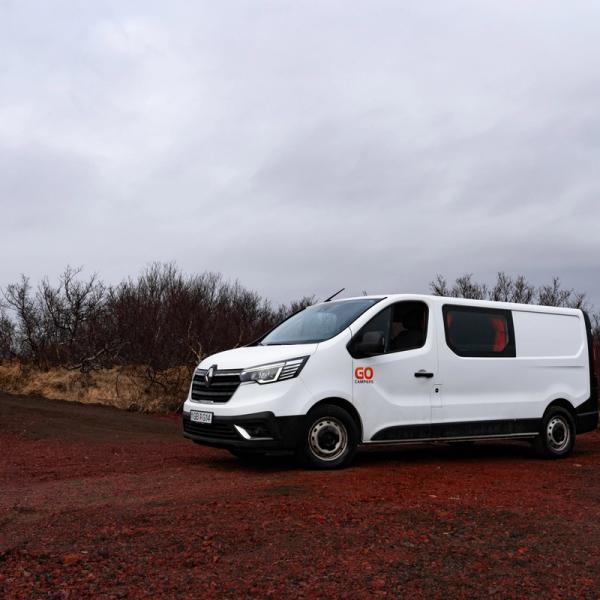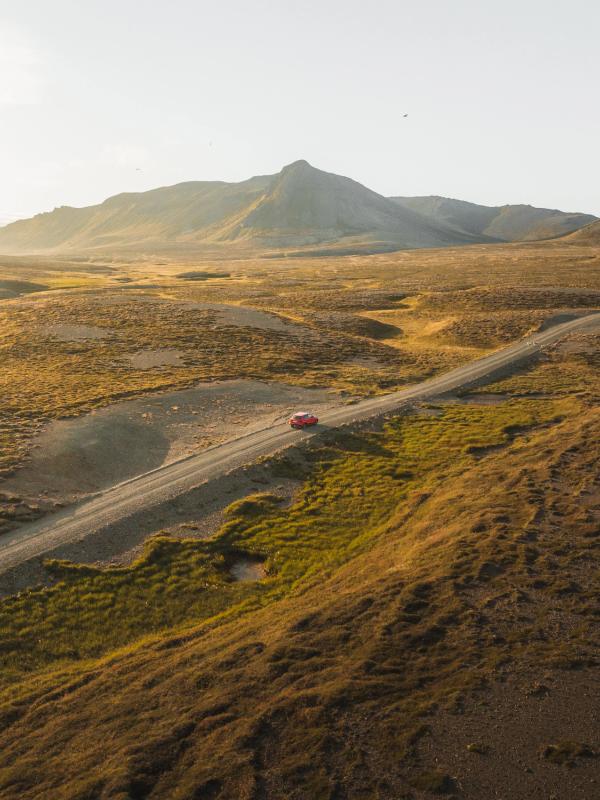
The Best Way to See Iceland: All You Need to Know
Iceland is a place that feels like it’s from another world. The land here comes in so many forms, some of them so unique, that they are difficult to describe. You have to see them to believe they are real. This island nation, located in the middle of the Atlantic Ocean, just at the edge of the Arctic Circle, is a dream for anyone with a sense of adventure. In recent years, traveling to Iceland has become easier and more accessible. But this country is not only beautiful, it’s also quite unique regarding transportation.
There are different ways to explore and enjoy everything this country has to offer. There are several options, but it all comes down to this question: What’s the best way to travel around Iceland? Let’s get to it!
Key Takeaways
- Iceland’s terrain is rugged and complicated, so it can be tricky to move around the country.
- There’s no rail system in the country.
- Most travelers choose to rent a campervan or a car, as it gives you freedom and is usually the most cost-efficient way to travel.
Means of Transport in Iceland: What’s The Best Way to Move Around?
If you’re planning a trip to Iceland, you’ve probably started by booking your flights. But maybe you’ve wondered: Once I’ve landed, what should I do? How do I get to all the places I want to see? Well, you have several options, all with their pros and cons, but some are, objectively, better than others.
Let’s start by explaining that there are no trains in Iceland. The rugged and complicated geography of the island, the sparse population, and the harsh weather have made building a railroad network impractical. Instead, travelers (and Icelanders, of course) rely on roads or air transport to move around the country. Below, we break down the five main transport options—campervan, car, plane, bus, and guided tours—to help you decide which suits your adventure best.
Campervan
Campervans and caravans have become an increasingly popular option for traveling through Iceland, and rightly so. It’s like having a cozy home on wheels, blending mobility with accommodation. The biggest advantage of renting a campervan is freedom: you set your pace, you decide where to go and when, and you have hundreds of options to spend the night at a low price.
It’s important to know that free camping is illegal in Iceland, but don’t worry. The country has more than 170 campsites, scattered across all the regions. Some are basic and some others are more luxurious, but there are ones for all tastes and budgets. These sites, costing an average of 1,400-2800 ISK (€10-20 or $11–22) per night per person, are budget-friendly compared to hotels. Campervans also save on accommodation costs, as you sleep in the van, and most include cooking gear, reducing dining expenses in Iceland, a country where dining out can be expensive.
On the other hand, campervans require some planning. As we said, you can’t camp wherever you want to protect the country’s fragile environment. The weather has a huge impact on the roads, and driving in winter can be tricky. Some roads even close for the season. It’s important to know that not all camping sites open year-round, so it’s important to check beforehand.
Also, fuel is not precisely cheap, which can add up to the final budget if you make a lot of miles. Still, the freedom it gives and how much you would save on hotels make this way of traveling unbeatable.
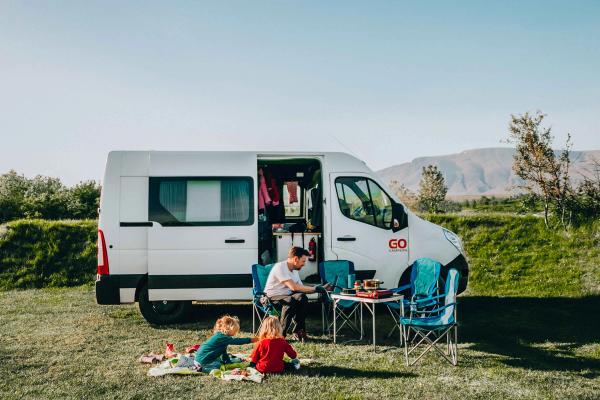
Car
As it happens with the campervans, renting a car offers flexibility and freedom. You can go everywhere in the country, from the main attractions to the most remote and isolated areas. They are usually cheaper than campervans, with daily rates starting at €47 ($54), and they’re a fuel-efficient option for solo travelers or couples. You can stay in hotels, guesthouses, or hostels, giving you comfort and space after a day of driving.
On the other hand, cars don’t have the all-in-one experience that campervans offer. The cost of accommodation can go up quickly if you’re spending some time in the country, and you’ll need to book in advance, especially in summer. Well, this also applies to the most popular camping grounds, to be honest. But hotels open in winter, something not all camping grounds do. Unlike campervans, cars don’t come with cooking gear, so you’ll spend more on meals.
For Iceland’s gravel roads or the infamous F-roads, it’s compulsory to rent a 4x4 car (this also applies to campervans).
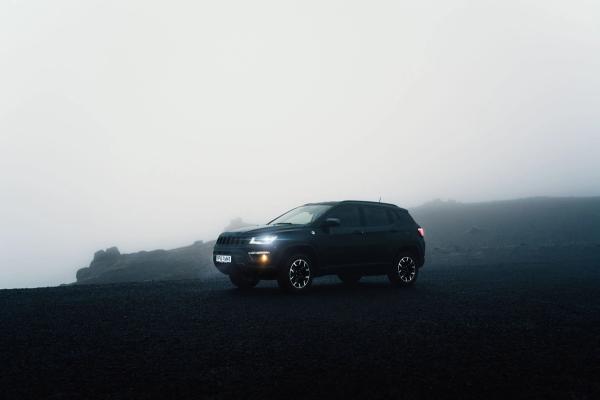
Plane
Domestic flights in Iceland connect Reykjavík to a number of towns like Akureyri, Ísafjörður, and Egilsstaðir. There are only 13 airports in the country, and most of them only have domestic flights. As an advantage, it’s a quick way of getting to the other side of the country. A flight from Reykjavik to Akureyri is just 45 minutes, while it takes almost 5 hours by car. Well, you need to add the waiting time and security checks at the airport, but you can still save some time. Traveling on the road also allows you to make stops on your way and enjoy the many natural monuments you can find, and that’s something you can’t do on a plane.
On top of that, air transport also requires complementary methods of transport. Once you land, you’ll need a car, bus, or tour to explore, adding costs and complexity. Air transport also depends on the weather, and delays are common in winter. For travelers short on time and focused on distant regions, planes can work, but they’re not the best option for experiencing Iceland’s diverse landscapes.

Bus
Buses in Iceland, operated by companies like Strætó and Reykjavík Excursions, connect major towns along the Ring Road and tourist hubs like the Blue Lagoon. Tickets cost $10–50 per route, making buses a budget option for solo travelers. They’re eco-friendly, and you don’t have to drive, so you can relax and enjoy the scenery.
However, there are no bus lines going to most of the attractions. They stick to main routes and go to cities and towns, so you’ll need another transport to get to the most remote areas. Schedules are irregular, especially in winter, and weather can stop services. For example, a bus from Reykjavík to Vík takes 2.5 hours but runs only a few times daily.
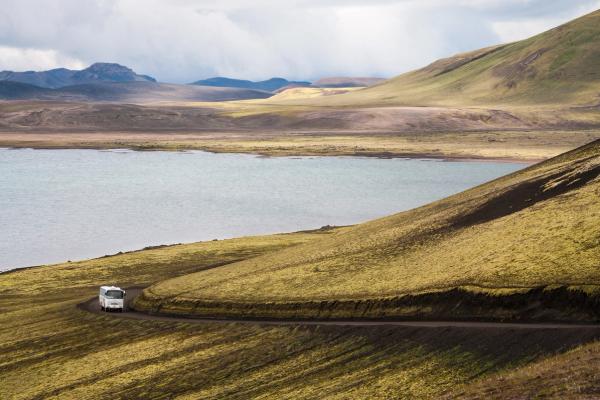
Guided Tours
Finally, another option is to book a spot on a guided tour. There are many companies that offer visits to many places in the country. The guides offer expert knowledge and share stories of Viking lore, geological wonders, and hidden spots, so you can get things you may miss if you do everything on your own. There are day trips and multi-day packages, covering transport, meals, and sometimes lodging. They’re ideal for travelers who want it easy and hassle-free.
But tours also come with disadvantages. They are usually expensive, and prices can be quite high in peak season. They also make you follow a schedule. You have to follow a fixed itinerary, often rushed, and you can’t linger and enjoy things at your own pace. Groups can feel impersonal, and you’re less likely to connect with Iceland’s culture. Tours work well for specific activities like glacier hikes, but they feel like they’re lacking something compared to a full road trip.
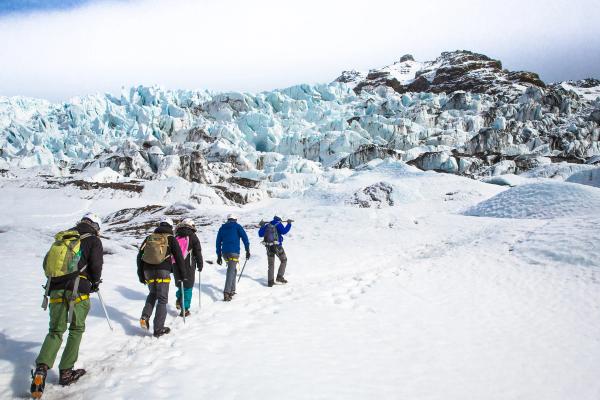
Traveling on the road: Basic Information
Overall, having your own vehicle is, for the majority of travelers, the best way to discover Iceland. You can go everywhere, whenever you want, taking your time. Campervans and cars each have their pros and cons, but campers are perhaps the cheapest and most convenient option.
Having said that, Iceland is a bit peculiar when it comes to road transportation, so here you have some information that is important to consider.
What Vehicle to Choose
First of all, selecting the right campervan is crucial for tailoring your Icelandic adventure to your needs, group size, and travel style.
Compact
Compact campervans are designed for solo travelers or couples seeking affordability and agility. They start at ISK 9,943 (€68 or $76). These vans sleep two in a cozy bed, usually include a gas stove, cooking utensils, and a cooler, making meal prep easy on the road. But not all of them do, so check the details and extras to make sure. Their small size ensures fuel efficiency and easy handling on paved roads and city streets. On the other hand, they lack space for large luggage or extra gear, and amenities like sinks or heaters are not always included. They are not allowed on F-roads and rugged gravel tracks.
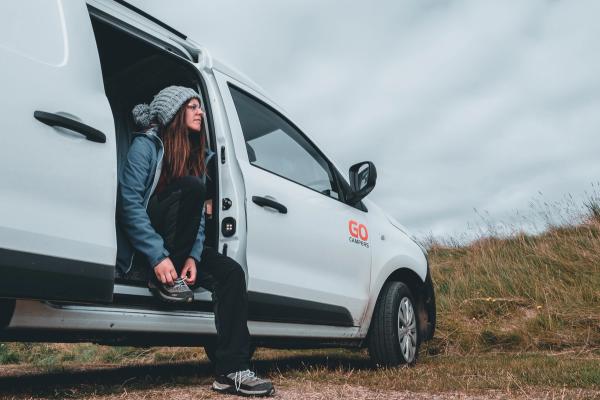
Medium
Looking for more space? Then you can opt for a medium-sized campervan. There are options for 2, 3, or 4 people, starting at ISK 13,956 (€95 or $107) per day. These vans offer a larger sleeping area, some have a kitchenette with a sink, and sometimes a small dining table. They have more storage space, and some models include heating for cooler seasons. Medium vans are versatile, handling paved roads and some gravel tracks, though they’re not suited for F-roads. They’re ideal for small groups or couples wanting extra comfort without the bulk of larger models, but fuel costs are slightly higher than compact vans.

4x4
If you want freedom to explore everything Iceland has to offer without worrying about what kind of road you’ll be driving on, then choose a 4x4 campervan. They are built to deal with the infamous F-roads’ rocky terrain and river crossings, as they feature high ground clearance, sturdy tires, and powerful engines. They sleep two to four, and start at ISK 13,956 (€95 or $107) per day. These vans are usually well-equipped, and some models have a rooftop tent for extra sleeping space. They might be a bit too much if you’re going to stick to only paved roads, but they are a must in winter or for going to the Highlands.
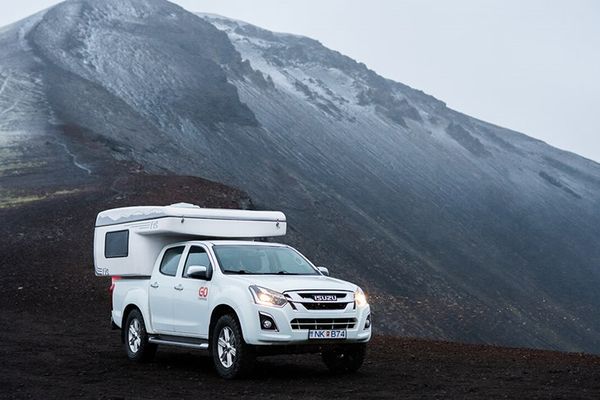
Large
Large campervans are the go-to option for families or groups. With prices starting at ISK 23,724 (€162 or $182) per day, these vans have spacious interiors with a lot of storage space and heating, perfect for cold nights. They are great for long trips. On the other hand, fuel prices are higher and are a bit more difficult to handle, which can be tricky at smaller campsites.
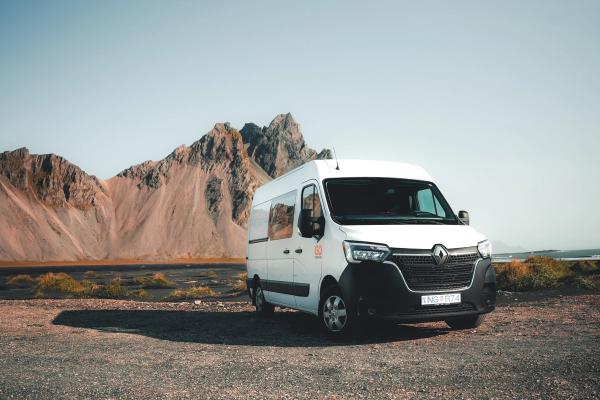
Extras and Insurance
When renting a campervan, you have lots of options to tailor your rental to your needs. The first thing to consider is the type of insurance you want. They all come with basic insurance included, but you might consider upgrading it depending on the places you are going to visit. For not much, you can choose additional coverage for things like gravel, sand, or ash.
You can also add extras like Wi-Fi, a cooler or fridge, chairs and tables, cooking gear, and much more. Normally, you can choose these items at the moment of booking, but you can also add them when picking up the van. Always check inclusions, as basic rentals may exclude these, and book extras early for peak seasons to ensure availability.
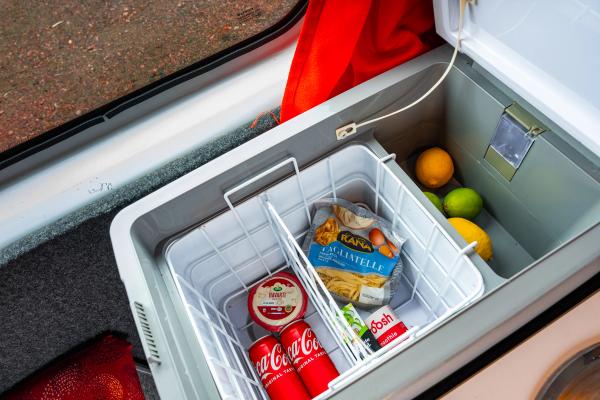
The Road System in Iceland
Traveling by car or campervan through Iceland is nice and easy. The country has a good road network that covers most of the island. However, it’s a bit peculiar, and can come with surprises if it’s your first time visiting. The most important and traveled road in Iceland is Route 1, also nicknamed the Ring Road. It circles the whole island, connecting major towns and attractions. It’s paved and well-maintained, suitable for all campervans and cars, though winter snow or ice can make it slippery.
Then we have secondary roads. Some are paved, but many of them are gravel, going to more remote areas like the Westfjords. These require caution, as loose stones can chip windshields—gravel protection insurance is wise. Then we have the F-roads, which are basically mountain tracks. They go to the central Highlands and are only open in summer, as they close for the rest of the year, as they become impassable. They are unpaved, rocky, and some require crossing rivers. It is mandatory to have a 4x4 vehicle to drive on these roads.
Speed limits are 90 km/h on paved roads, 80 km/h on gravel, and going over the speed limit can result in high fines. Even on paved roads, there are narrow sections, single-lane bridges, and tunnels. In these cases, the custom is that the first vehicle to arrive is the one that has preference. It’s normal to find sheep roaming free on the roads. If you find yourself in this situation, slow down or stop if necessary.
Best Time to Visit Iceland
The weather in Iceland is unpredictable and can change at a moment’s notice. And it has a huge influence on transport. Iceland’s seasons dramatically shape the travel experience, each offering distinct advantages and challenges. Weather influences road conditions, campsite availability, and activities. Here’s what you can expect season by season.
Spring (April and May)
The landscapes start to wake up after the winter slumber. The temperatures are still a bit chilly, averaging 0°C to 7°C (32°F to 45°F). Most roads are clear, but the F-roads remain closed until June. You can still find some setbacks like snow or ice, so it’s essential to drive carefully. Rain and wind are common, especially in coastal areas. Seasonal campsites start opening, but some facilities are limited.
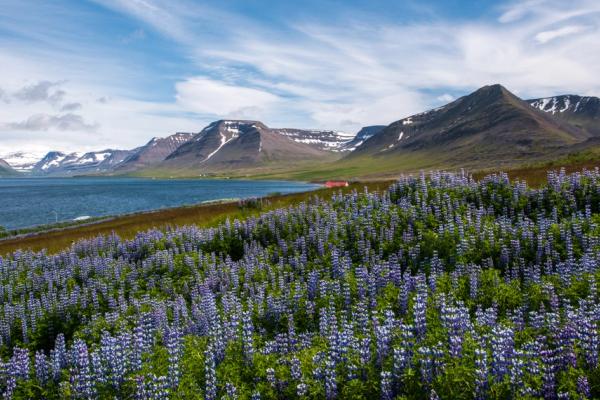
Summer (June to August)
This season is, in terms of weather, the best for traveling around the country. Summer comes with long days, with nearly 24-hour daylight, and the warmest weather, with temperatures between 8°C and 15°C (46°F to 59°F), with highs that can reach up to 20°C (68°F). All roads, including the F-roads, and campsites are open. On the other hand, it’s the busiest season, so it’s essential to book everything (vans, cars, accommodation, and tours) well in advance. Summer is ideal for extensive exploration but requires early planning.
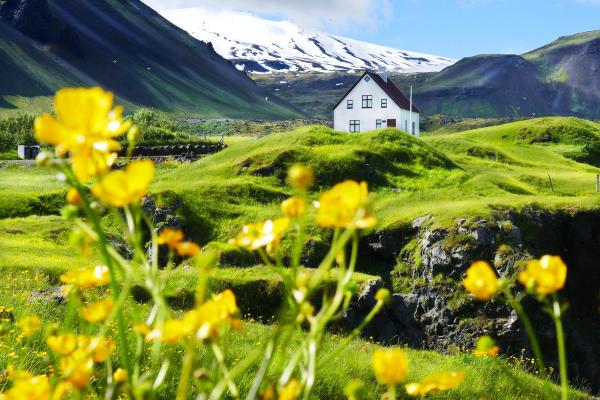
Autumn (September and October)
Autumn paints Iceland in beautiful colors, with temperatures between 5°C and 10°C (41°F to 50°F) and fewer tourists. Most campsites are open until mid-September, and during this season, the Northern Lights can be visible. Rain and wind intensify, and some gravel roads get muddy. Autumn balances affordability and beauty but demands flexibility for possible weather-related setbacks.
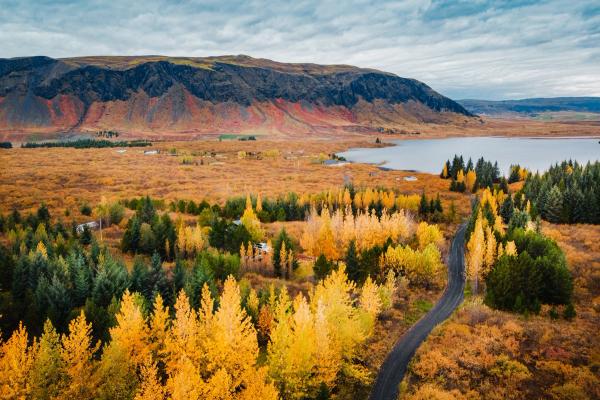
Winter (November to March)
Winter transforms Iceland into a snowy wonderland, but the conditions can be a bit harsh for travel. The Ring Road remains open, but snowstorms or ice can close secondary roads. Only a few campsites operate, and 4x4 vehicles with heaters are essential. There are few tourists and daylight is limited, and it’s essential to plan carefully.
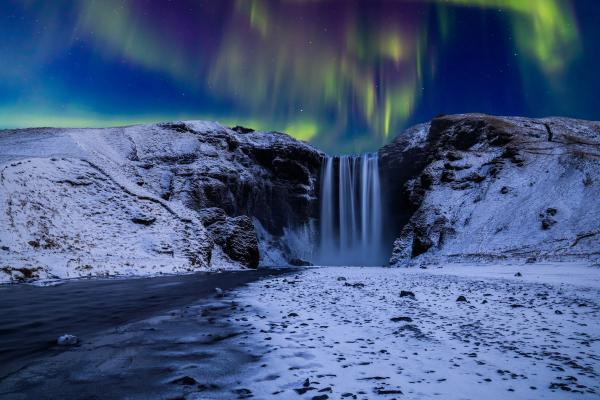
Travel Tips
- Book Early: Reserve your transportation method and accommodation months ahead, especially for summer, to secure your preferred vehicle and spots.
- Pack Smart: Bring layers, waterproof clothing, and hiking boots.
- Check the weather and the road conditions: The climate can have a huge impact on travel, so it’s necessary to check the forecast regularly to be prepared. It can also heavily affect the roads, so look up their status before setting out.
- Stay Connected: Get a local SIM card or rent Wi-Fi for navigation and weather updates.
- Budget Wisely: Plan your trip according to your budget. If you want to save, cook your own meals, and book campsites in advance for better deals.
- Plan your route: Gas stations and shops can be sparse in certain areas. Fill up the tank whenever you have the chance to avoid running low.
- Embrace Flexibility: Weather can change plans. Have backup routes and be ready to adapt for safety and enjoyment.
Conclusion
There are many options for traveling through Iceland. Each one of them has its own pros and cons, so pick the one that suits your travel needs best. However, having your own vehicle gives you freedom and flexibility that are difficult to find with other methods. This way you can go anywhere you want, whenever you want, at your own pace.

